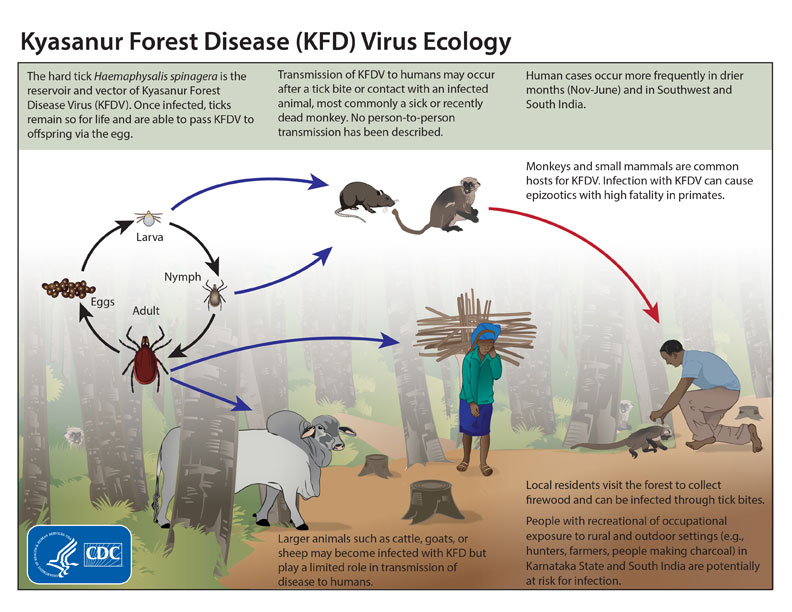Important Facts For Prelims
Kyasanur Forest Disease
- 09 Mar 2020
- 2 min read
Why in News
- There is a proposal to set up a research centre on Kyasanur Forest Disease (KFD) in Sagar, Karnataka.
- The State government has already allocated ₹15 crore for establishing the centre, which will take up study and research on tackling KFD.
Key Points
- It is caused by Kyasanur Forest disease Virus (KFDV), a member of the virus family Flaviviridae.
- It was first identified in 1957 in a sick monkey from the Kyasanur Forest in Karnataka. Since then, between 400-500 human cases per year have been reported.
- KFD is endemic to the Indian state of Karnataka. It is also referred to as monkey fever by locals.
- Rodents, shrews, and monkeys are common hosts for KFDV after being bitten by infected Hard ticks (Haemaphysalis Spinigera). KFDV can cause epizootics (outbreak of disease in animals) with high fatality in primates.
- Transmission: To humans, it may occur after a tick bite or contact with an infected animal (a sick or recently dead monkey).
- Signs and Symptoms: After an incubation period of 3-8 days, the symptoms like chills, fever, headache, severe muscle pain, vomiting, gastrointestinal symptoms and bleeding may occur. Patients may experience abnormally low blood pressure, and low platelet, red blood cell, and white blood cell counts.
- Diagnosis: It can be diagnosed in the early stage of illness by molecular detection by Polymerase Chain Reaction (PCR) or virus isolation from blood. Later, serologic testing using enzyme-linked immunosorbent serologic assay (ELISA) can be performed.
- Treatment and Prevention: There is no specific treatment for KFD although vaccine is available.








